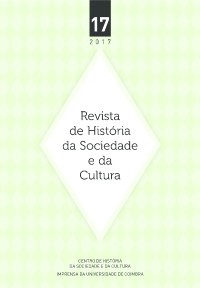Please use this identifier to cite or link to this item:
https://hdl.handle.net/10316.2/92596| DC Field | Value | Language |
|---|---|---|
| dc.contributor.author | Moráis Morán, José Alberto | - |
| dc.date.accessioned | 2017-12-17T22:56:57Z | |
| dc.date.accessioned | 2020-09-29T22:20:03Z | - |
| dc.date.available | 2017-12-17T22:56:57Z | |
| dc.date.available | 2020-09-29T22:20:03Z | - |
| dc.date.issued | 2017 | - |
| dc.identifier.issn | 2183-8615 (digital) | - |
| dc.identifier.issn | 1645-2259 | - |
| dc.identifier.uri | https://hdl.handle.net/10316.2/43337 | - |
| dc.description.abstract | Se analiza la obra edilicia de los arquitectos italianos Barison y Schiavon en Chile, aportando nuevos datos sobre dos edificios construidos en el año 1916. En el llamado palacio Baburizza se asumieron elementos vernáculos presentes en la arquitectura chilena de finales del siglo XIX, más allá del uso de repertorios liberty italianos; mientras que en el palacio Valle no se copiaron las formas de la arquitectura veneciana medieval, tal y como se ha repetido en la historiografía. Al contrario, sus modelos están en las obras decimonónicas “neomedievales” y, con mayor incidencia, en los repertorios de la arquitectura coetánea de la Liguria, de donde era originario el promotor de la obra. Finalmente se aportan otros datos inéditos sobre la trayectoria de estos dos arquitectos, especialmente a partir de sus relaciones con constructores coetáneos, como Esteban Harrington Arellano y Josué Smith Solar. | spa |
| dc.description.abstract | The building work of Italian architects Barison and Schiavon in Chile is analyzed, providing new data on two buildings built in 1916. In the so-called palace Baburizza, vernacular elements seen in the Chilean architecture of the late nineteenth century were assumed, beyond the use of Italian liberty repertoires, while in the Valle palace, forms of the Venetian medieval architecture are not copied, as it has been repeated in historiography. On the contrary, their models are in the nineteenth-century “neo-medieval” works and, with the highest incidence, in the repertoires of the contemporary architecture of Liguria, from where the promoter of the work came. Finally other unpublished data on the trajectory of these two architects are given, especially from its relations with contemporary architects such as Esteban Harrington Arellano and Josué Smith Solar. | eng |
| dc.language.iso | spa | - |
| dc.publisher | Imprensa da Universidade de Coimbra | - |
| dc.rights | open access | - |
| dc.subject | Barison | eng |
| dc.subject | Schiavon | eng |
| dc.subject | Architecture | eng |
| dc.subject | Chile | eng |
| dc.subject | Italy | eng |
| dc.subject | Barison | por |
| dc.subject | Schiavon | por |
| dc.subject | arquitectura | por |
| dc.subject | Chile | por |
| dc.subject | Italia | por |
| dc.title | 1916: Italia-Chile, Barison-Schiavon y sus edificios en el centenario | por |
| dc.title.alternative | 1916: Italy-Chile, Barison-Schiavon and their buildings in the centenary | por |
| dc.type | article | - |
| uc.publication.collection | Revista de História da Sociedade e da Cultura vol. 17 | - |
| uc.publication.firstPage | 295 | - |
| uc.publication.lastPage | 314 | - |
| uc.publication.location | Coimbra | - |
| uc.publication.journalTitle | Revista de História da Sociedade e da Cultura | - |
| uc.publication.volume | 17 | por |
| dc.identifier.doi | 10.14195/1645-2259_17_13 | - |
| uc.publication.section | Artigos | - |
| uc.publication.orderno | 14 | - |
| uc.publication.area | Artes e Humanidades | - |
| uc.publication.manifest | https://dl.uc.pt/json/iiif/10316.2/92596/246581/manifest?manifest=/json/iiif/10316.2/92596/246581/manifest | - |
| uc.publication.thumbnail | https://dl.uc.pt/retrieve/11826161 | - |
| item.grantfulltext | open | - |
| item.fulltext | With Fulltext | - |
| Appears in Collections: | Revista de História da Sociedade e da Cultura | |
Files in This Item:
| File | Description | Size | Format | |
|---|---|---|---|---|
| 1916_italia-chile__barison-schiavon.pdf | 627.77 kB | Adobe PDF |  |
Items in DSpace are protected by copyright, with all rights reserved, unless otherwise indicated.
